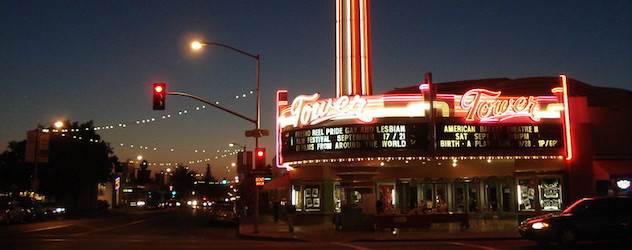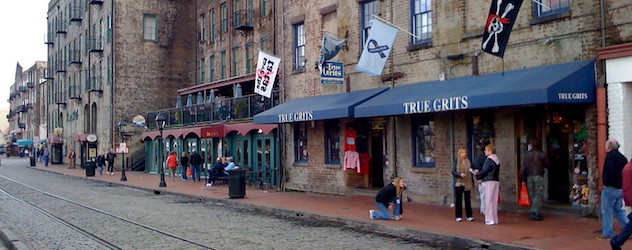2020, and thus the new decade, will soon be upon us, which means you should be ready for an overdoing of the “Best {insert topic here} of the Decade” lists in the coming weeks.
You won’t find such a list here. Instead, LendEDU has decided to look forward into 2020 and beyond for our newest report.
Analyzing a variety of socioeconomic factors like recent income growth, population changes, and educational attainment levels for hundreds of cities in the United States, we ranked each based on how well positioned it is for economic advancement in the new decade.
The 2020s will inevitably bring drastic changes that will impact the lives of millions of Americans; this list estimates which places in the U.S. will experience the most profound economic changes, whether for better or worse, over the next 10 years.
Click here to jump to the complete rankings
Top 25 U.S. Cities Best Positioned For Economic Advancement in the New Decade
1. San Diego, California

- Percentage of 18-24 Year Old Population With At Least an Associate’s Degree: 47.10% (Rank: 151)
- Net Business Openings: 1,424 (Rank: 84)
- Net Population Change: 248,105 (Rank: 23)
- Percent Change in Income: 5.70% (Rank: 46)
- Number of Residential Building Permits: 9,834 (Rank: 29)
- Percent Change in Employment to Population Ratio: 1.60% (Rank: 39)
- Percent Change in Unemployment Rate: -2.40% (Rank: 95)
2. Reno, Nevada

- Percentage of 18-24 Year Old Population With At Least an Associate’s Degree: 49.30% (Rank: 111)
- Net Business Openings: 226 (Rank: 84)
- Net Population Change: 44,325 (Rank: 75)
- Percent Change in Income: 6.30% (Rank: 24)
- Number of Residential Building Permits: 4,450 (Rank: 58)
- Percent Change in Employment to Population Ratio: 1.70% (Rank: 25)
- Percent Change in Unemployment Rate: -3.40% (Rank: 32)
3. Los Angeles, California

- Percentage of 18-24 Year Old Population With At Least an Associate’s Degree: 49.70% (Rank: 102)
- Net Business Openings: 6,325 (Rank: 1)
- Net Population Change: 462,540 (Rank: 8)
- Percent Change in Income: 5.40% (Rank: 65)
- Number of Residential Building Permits: 29,524 (Rank: 7)
- Percent Change in Employment to Population Ratio: 1.20% (Rank: 85)
- Percent Change in Unemployment Rate: -2.10% (Rank: 144)
4. San Francisco, California

- Percentage of 18-24 Year Old Population With At Least an Associate’s Degree: 46.70% (Rank: 159)
- Net Business Openings: 1,931 (Rank: 15)
- Net Population Change: 393,897 (Rank: 13)
- Percent Change in Income: 7.30% (Rank: 7)
- Number of Residential Building Permits: 17,421 (Rank: 18)
- Percent Change in Employment to Population Ratio: 1.40% (Rank: 54)
- Percent Change in Unemployment Rate: -2.00% (Rank: 156)
5. Miami, Florida

- Percentage of 18-24 Year Old Population With At Least an Associate’s Degree: 46.30% (Rank: 169)
- Net Business Openings: 3,730 (Rank: 4)
- Net Population Change: 632,488 (Rank: 5)
- Percent Change in Income: 5.20% (Rank: 82)
- Number of Residential Building Permits: 19,553 (Rank: 13)
- Percent Change in Employment to Population Ratio: 1.20% (Rank: 72)
- Percent Change in Unemployment Rate: -2.50% (Rank: 86)
6. San Jose, California

- Percentage of 18-24 Year Old Population With At Least an Associate’s Degree: 45.80% (Rank: 178)
- Net Business Openings: 627 (Rank: 38)
- Net Population Change: 162,170 (Rank: 28)
- Percent Change in Income: 7.60% (Rank: 4)
- Number of Residential Building Permits: 8,744 (Rank: 36)
- Percent Change in Employment to Population Ratio: 1.50% (Rank: 41)
- Percent Change in Unemployment Rate: -1.90% (Rank: 172)
7. Stockton, California

- Percentage of 18-24 Year Old Population With At Least an Associate’s Degree: 44.90% (Rank: 198)
- Net Business Openings: 189 (Rank: 95)
- Net Population Change: 67,354 (Rank: 55)
- Percent Change in Income: 6.10% (Rank: 28)
- Number of Residential Building Permits: 3,280 (Rank: 75)
- Percent Change in Employment to Population Ratio: 1.50% (Rank: 41)
- Percent Change in Unemployment Rate: -3.90% (Rank: 22)
8. Charleston, South Carolina

- Percentage of 18-24 Year Old Population With At Least an Associate’s Degree: 46.50% (Rank: 163)
- Net Business Openings: 669 (Rank: 36)
- Net Population Change: 123,004 (Rank: 35)
- Percent Change in Income: 4.50% (Rank: 182)
- Number of Residential Building Permits: 7,002 (Rank: 41)
- Percent Change in Employment to Population Ratio: 1.40% (Rank: 54)
- Percent Change in Unemployment Rate: -3.40% (Rank: 32)
9. Fresno, California

- Percentage of 18-24 Year Old Population With At Least an Associate’s Degree: 49.50% (Rank: 109)
- Net Business Openings: 158 (Rank: 106)
- Net Population Change: 63,904 (Rank: 57)
- Percent Change in Income: 4.70% (Rank: 144)
- Number of Residential Building Permits: 2,929 (Rank: 87)
- Percent Change in Employment to Population Ratio: 1.50% (Rank: 41)
- Percent Change in Unemployment Rate: -4.40% (Rank: 11)
10. Orlando, Florida

- Percentage of 18-24 Year Old Population With At Least an Associate’s Degree: 50.70% (Rank: 88)
- Net Business Openings: 2,060 (Rank: 12)
- Net Population Change: 438,560 (Rank: 10)
- Percent Change in Income: 4.20% (Rank: 243)
- Number of Residential Building Permits: 28,882 (Rank: 8)
- Percent Change in Employment to Population Ratio: 1.00% (Rank: 108)
- Percent Change in Unemployment Rate: -2.50% (Rank: 89)
11. Portland, Oregon

- Percentage of 18-24 Year Old Population With At Least an Associate’s Degree: 45.10% (Rank: 194)
- Net Business Openings: 1,490 (Rank: 20)
- Net Population Change: 252,814 (Rank: 22)
- Percent Change in Income: 5.50% (Rank: 59)
- Number of Residential Building Permits: 14,180 (Rank: 23)
- Percent Change in Employment to Population Ratio: 1.50% (Rank: 41)
- Percent Change in Unemployment Rate: -1.70% (Rank: 209)
12. Atlanta, Georgia

- Percentage of 18-24 Year Old Population With At Least an Associate’s Degree: 42.40% (Rank: 259)
- Net Business Openings: 3,029 (Rank: 6)
- Net Population Change: 663,201 (Rank: 4)
- Percent Change in Income: 4.40% (Rank: 204)
- Number of Residential Building Permits: 39,441 (Rank: 4)
- Percent Change in Employment to Population Ratio: 1.50% (Rank: 41)
- Percent Change in Unemployment Rate: -2.80% (Rank: 63)
13. Provo, Utah

- Percentage of 18-24 Year Old Population With At Least an Associate’s Degree: 59.30% (Rank: 35)
- Net Business Openings: 382 (Rank: 53)
- Net Population Change: 106,883 (Rank: 38)
- Percent Change in Income: 5.20% (Rank: 82)
- Number of Residential Building Permits: 6,841 (Rank: 42)
- Percent Change in Employment to Population Ratio: 1.00% (Rank: 107)
- Percent Change in Unemployment Rate: -1.60% (Rank: 234)
14. Sacramento, California

- Percentage of 18-24 Year Old Population With At Least an Associate’s Degree: 49.60% (Rank: 106)
- Net Business Openings: 1,149 (Rank: 27)
- Net Population Change: 196,059 (Rank: 26)
- Percent Change in Income: 4.20% (Rank: 243)
- Number of Residential Building Permits: 7,873 (Rank: 37)
- Percent Change in Employment to Population Ratio: 1.10% (Rank: 92)
- Percent Change in Unemployment Rate: -2.80% (Rank: 63)
15. Riverside, California

- Percentage of 18-24 Year Old Population With At Least an Associate’s Degree: 44.10% (Rank: 220)
- Net Business Openings: 1,388 (Rank: 22)
- Net Population Change: 397,395 (Rank: 12)
- Percent Change in Income: 4.30% (Rank: 223)
- Number of Residential Building Permits: 14,809 (Rank: 21)
- Percent Change in Employment to Population Ratio: 1.50% (Rank: 41)
- Percent Change in Unemployment Rate: -2.90% (Rank: 62)
16. Austin, Texas

- Percentage of 18-24 Year Old Population With At Least an Associate’s Degree: 50.00% (Rank: 98)
- Net Business Openings: 1,881 (Rank: 17)
- Net Population Change: 451,995 (Rank: 9)
- Percent Change in Income: 5.80% (Rank: 42)
- Number of Residential Building Permits: 30,035 (Rank: 6)
- Percent Change in Employment to Population Ratio: 1.10% (Rank: 90)
- Percent Change in Unemployment Rate: -0.80% (Rank: 355)
17. Savannah, Georgia

- Percentage of 18-24 Year Old Population With At Least an Associate’s Degree: 45.10% (Rank: 194)
- Net Business Openings: 144 (Rank: 111)
- Net Population Change: 41,896 (Rank: 79)
- Percent Change in Income: 5.30% (Rank: 72)
- Number of Residential Building Permits: 3,158 (Rank: 79)
- Percent Change in Employment to Population Ratio: 1.80% (Rank: 20)
- Percent Change in Unemployment Rate: -2.80% (Rank: 63)
18. Raleigh, North Carolina

- Percentage of 18-24 Year Old Population With At Least an Associate’s Degree: 45.70% (Rank: 181)
- Net Business Openings: 922 (Rank: 30)
- Net Population Change: 232,052 (Rank: 24)
- Percent Change in Income: 5.40% (Rank: 65)
- Number of Residential Building Permits: 15,950 (Rank: 19)
- Percent Change in Employment to Population Ratio: 1.20% (Rank: 89)
- Percent Change in Unemployment Rate: -1.70% (Rank: 219)
19. Chicago, Illinois

- Percentage of 18-24 Year Old Population With At Least an Associate’s Degree: 43.40% (Rank: 237)
- Net Business Openings: 2,760 (Rank: 8)
- Net Population Change: 37,177 (Rank: 86)
- Percent Change in Income: 5.30% (Rank: 72)
- Number of Residential Building Permits: 17,681 (Rank: 16)
- Percent Change in Employment to Population Ratio: 0.90% (Rank: 127)
- Percent Change in Unemployment Rate: -2.40% (Rank: 95)
20. Seattle, Washington

- Percentage of 18-24 Year Old Population With At Least an Associate’s Degree: 41.50% (Rank: 276)
- Net Business Openings: 1,713 (Rank: 18)
- Net Population Change: 499,558 (Rank: 7)
- Percent Change in Income: 6.70% (Rank: 14)
- Number of Residential Building Permits: 28,186 (Rank: 9)
- Percent Change in Employment to Population Ratio: 1.20% (Rank: 72)
- Percent Change in Unemployment Rate: -1.50% (Rank: 247)
21. Charlotte, North Carolina

- Percentage of 18-24 Year Old Population With At Least an Associate’s Degree: 44.20% (Rank: 216)
- Net Business Openings: 1,674 (Rank: 19)
- Net Population Change: 352,216 (Rank: 17)
- Percent Change in Income: 4.30% (Rank: 223)
- Number of Residential Building Permits: 26,209 (Rank: 10)
- Percent Change in Employment to Population Ratio: 1.40% (Rank: 54)
- Percent Change in Unemployment Rate: -2.30% (Rank: 109)
22. Santa Rosa, California

- Percentage of 18-24 Year Old Population With At Least an Associate’s Degree: 51.10% (Rank: 86)
- Net Business Openings: 112 (Rank: 129)
- Net Population Change: 16,074 (Rank: 166)
- Percent Change in Income: 7.20% (Rank: 9)
- Number of Residential Building Permits: 3,279 (Rank: 76)
- Percent Change in Employment to Population Ratio: 1.20% (Rank: 72)
- Percent Change in Unemployment Rate: -2.20% (Rank: 121)
23. St. George, Utah

- Percentage of 18-24 Year Old Population With At Least an Associate’s Degree: 53.20% (Rank: 65)
- Net Business Openings: 190 (Rank: 94)
- Net Population Change: 33,585 (Rank: 97)
- Percent Change in Income: 5.50% (Rank: 59)
- Number of Residential Building Permits: 2,889 (Rank: 88)
- Percent Change in Employment to Population Ratio: 1.10% (Rank: 92)
- Percent Change in Unemployment Rate: -2.00% (Rank: 167)
24. Cape Coral, Florida

- Percentage of 18-24 Year Old Population With At Least an Associate’s Degree: 40.30% (Rank: 302)
- Net Business Openings: 574 (Rank: 39)
- Net Population Change: 135,856 (Rank: 31)
- Percent Change in Income: 4.90% (Rank: 114)
- Number of Residential Building Permits: 9,721 (Rank: 30)
- Percent Change in Employment to Population Ratio: 1.40% (Rank: 54)
- Percent Change in Unemployment Rate: -2.40% (Rank: 95)
25. Boston, Massachusetts

- Percentage of 18-24 Year Old Population With At Least an Associate’s Degree: 43.10% (Rank: 244)
- Net Business Openings: 2,301 (Rank: 10)
- Net Population Change: 322,792 (Rank: 18)
- Percent Change in Income: 5.20% (Rank: 82)
- Number of Residential Building Permits: 14,183 (Rank: 22)
- Percent Change in Employment to Population Ratio: 0.90% (Rank: 141)
- Percent Change in Unemployment Rate: –2.00% (Rank: 156)
Complete Rankings
Tips for Prospective Homebuyers
For prospective homebuyers, any of the cities mentioned above would be great places to call home because of the potential for economic advancement. But, the home buying process is more than just choosing a city, especially if someone is using a mortgage to finance the purchase.
LendEDU outlines some tips below for those who are looking to become homeowners with the help of a mortgage.
Create a Budget
First things first, any potential homeowner needs to create a budget to help them narrow the search process to homes and mortgages that fit within their specific personal finance situation. One must look at current property values in a city, in addition to tax rates, commuter costs, and anything else that will impact a budget.
Additionally, a budget needs to be created for a mortgage so that the homeowner can comfortably manage monthly payments while also getting a terrific home. LendEDU’s mortgage calculator can help any future homeowner get an idea for their monthly home loan payments depending on the loan size, rate, and term.
Compare Options
In 2020, there are seemingly endless options when it comes to mortgage lenders so it’s imperative for a prospective homebuyer to do their due diligence and compare and contrast the various home loan companies and the deals they can offer. And, if a consumer wants to conduct the home buying process from the comfort of his or her couch, there are online mortgage lenders to choose from.
Amongst the things homebuyers should research are current mortgage rates to get a better idea as to what a favorable home loan interest rate is looking like these days. Further, there are mortgages designed for specific groups of people like VA home loans which are mortgages made specifically for veterans.
Consider Refinancing in the Future
Once a consumer has become a homeowner with the help of a mortgage and has established a history of successful repayment, they should always consider looking into mortgage refinance companies to see if they can receive a more friendly interest rate or a better term by refinancing their home loan.
LendEDU’s mortgage refinance calculator can help give homeowners a a better idea as to how much they can save by refinancing their home loan to ideally receive a lower interest rate.
Methodology
The data that was utilized to develop this report came from two data sources: The U.S. Census Bureau and the Bureau of Labor Statistics. Every data point other than unemployment rate statistics came from the former, while that one came from the latter.
In total, 380 of the largest metropolitan areas in the United States had data for each data point and were analyzed for the report’s rankings. For two data points, the percent change in the employment-to-population ratio and the percent change in unemployment rate, multiple years had to be individually pulled to complete the final calculation that was used in this report. Almost all of the data that came from the U.S. Census Bureau was pulled from the American Community Survey.
The following data points were used to evaluate each city:
- Percentage of 18-24 Year Old Population With At Least an Associate’s Degree: The percentage of a metropolitan area’s 18-24 year old population that holds at least an Associate’s Degree (Source: U.S. Census Bureau; seen in table as “% of Pop. 18-24 Yrs. W/ Min, of Assoc. Degree”).
- Net Business Openings: The net amount of businesses that have opened in each metropolitan area from 2015 to 2016. Closed businesses were subtracted from opened businesses during that time (Source: U.S. Census Bureau; seen in table as “Net Business Openings (’15-’16)”).
- Net Population Change: The net population change in each metropolitan area from 2010 to 2018. People leaving each city and mortality statistics were subtracted from people moving into each city and birth statistics during that time (Source: U.S. Census Bureau; seen in table as “Net Population Change (’10-’18)”).
- Percent Change in Income: The percent change in average income in each metropolitan area from 2017 to 2018 (Source: U.S. Census Bureau; seen in table as “% Change in Income (’17-’18)”).
- Number of Residential Building Permits: The number of residential building permits in each metropolitan area in 2018 (Source: U.S. Census Bureau; seen in table as “# of Res. Building Permits in 2018”).
- Percent Change in Employment to Population Ratio: The percent change in the employment to population ratio in each metropolitan area from 2015 to 2017 (Source: U.S. Census Bureau; seen in table as “% Change in Employment to Pop. Ratio (’15-’17)”).
- Percent Change in Unemployment Rate: The percent change in the unemployment rate in each metropolitan area form 2015 to 2019 (Source: Bureau of Labor Statistics; seen in table as “% Change in Unemployment Rate (’15-’19)”).
To complete the rankings, each individual city was ranked amongst its peers for each individual data point. After that was completed, each city’s respective rankings for each of the six data points were averaged together to formulate an overall ranking for each city.
See more of LendEDU’s Research
About our contributors
-
 Written by Mike Brown
Written by Mike BrownMike Brown uses data from surveys and publicly available resources to identify emerging personal finance trends and tell unique stories.